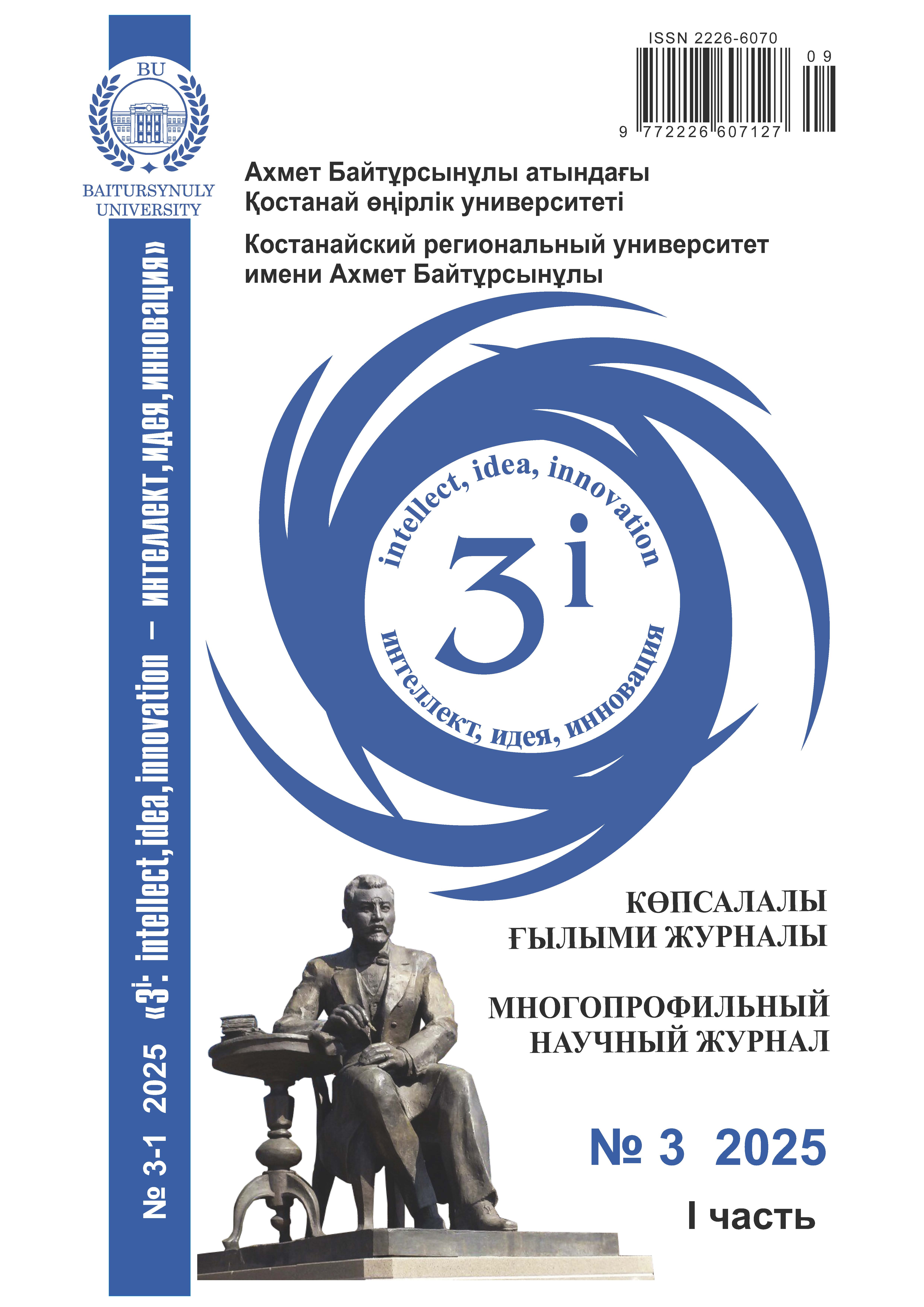ХРОМ, НИКЕЛЬ И КОБАЛЬТ В ДОННЫХ ОТЛОЖЕНИЙ АГРАРНЫХ ВОДОХРАНИЛИЩ КОСТАНАЙСКОЙ ОБЛАСТИ: ЭКОЛОГИЧЕСКАЯ БЕЗОПАСНОСТЬ И МЕТОДЫ МОНИТОРИНГА
DOI:
https://doi.org/10.52269/KGTD2531299Ключевые слова:
содержание хрома, содержание никеля, содержание кобальта, водохранилище, донные отложения, рентгенфлоуресцентный спектральный анализ, тяжелый элементыАннотация
В ходе настоящего исследования были изучены геохимические характеристики донных отложений двух крупных водохранилищ Северного Казахстана — Верхнетобольского и Каратомарского, расположенных в пределах Костанайской области. Данные водохранилища являются важнейшими водными объектами, которые покрывают нужды в орошении сельскохозяйственных угодий региона. В связи с этим экологический мониторинг водохранилищ необходим для поддержания качества производимой сельскохозяйственной продукции Костанайской области. Пробы отбирались в зимний период в условиях устойчивого ледового покрова, что позволило охватить прибрежные зоны в естественном состоянии сезонной стабильности. Особое внимание уделялось определению концентраций хрома, никеля и кобальта – ключевых элементов, способных оказывать влияние на экосистемные процессы в придонной среде. Содержание элементов, рассчитанное по пересчёту из оксидной формы в элементную, не превышало фоновых значений, характерных для земной коры (кларков). Это указывает на отсутствие выраженной техногенной нагрузки в исследованных зонах. Полученные результаты коррелируют с международными нормативами, в том числе с положениями Руководящих принципов ЕЭК ООН, согласно которым грубозернистые компоненты донных отложений, как правило, характеризуются низкой аккумуляцией тяжёлых металлов. Практическая значимость работы заключается в формировании обоснованной базы для дальнейшего мониторинга водоёмов сельскохозяйственного назначения. Данные могут служить опорными при оценке экологического состояния донных систем проточных водоёмов умеренного климата, а также при разработке экспресс-методов рентгенофлуоресцентного анализа твёрдофазных фракций осадков.




